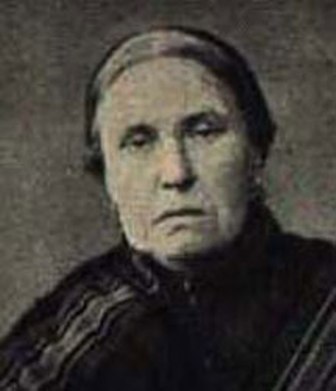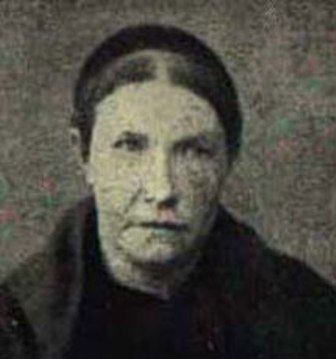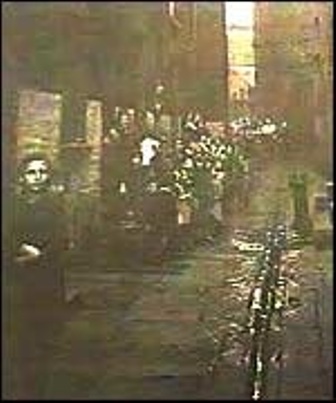MURDEROUS WIDOWS by peter dellius, retired
Murderous Widows
So infamous were the crimes of Catherine Flannagan and her sister Margaret Higgins that they have echoed down the years and have been much debated in the spoken and written word. They have been referred to as the Borgia Sisters of the slums and more frequently as the Black Widows.
The slum districts of Liverpool in the 1880’s were in the main places where the poor of the town existed rather than lived. The housing was mostly horrible Court dwellings where whole families lived in one room, one toilet to serve the whole street and the only water came from a solitary fountain (Ornamental Standpipe)
Skirving Street stood and indeed still stands on the east side of Scotland Road, and runs between that road and Great Homer Street, however, the slums are long gone but not the memories of the deeds perpetrated there. There was nothing grand about these crimes, they were Horrific, Despicable and carried out ruthlessly through pure greed.
The two main characters in this sordid tale were sisters, Catherine and Margaret Thompson, both were Irish by birth. Catherine was born c1829 and Margaret c1843; both must have suffered terribly in their early days due to the potato famine and along with thousands of others found themselves in Liverpool, like many other emigrants they remained here.
The year 1880 found the sisters living at 5 Skirving Street, Catherine was landlady of the premises and Margaret was a charlady (cleaner) both women were widows, drunkards and of dubious character. (Both Women were illiterate)Also resident in the house were John Flannagan, 22 years, Catherine’s son, Thomas Higgins, a hod carrier, his daughter Mary aged 8, Patrick Jennings, a dock labourer and his 16 year old daughter Margaret lodged at the house.
Towards Christmas 1880 John Flannagan died, his death was not a surprise to anyone as his Mother had been telling people for a while that he was unwell. His Mother then claimed approximately £70 in insurance money from a number of societies, this sum would now equate to about £5,000.
In October 1882, Margaret Thompson married Thomas Higgins. A month later Margaret’s little stepdaughter, Mary Higgins was dead and her loving stepmother lost no time in claiming the £22.00 Insurance monies.
In January 1883 16 year old Margaret Jennings died and Catherine Flannagan who had her insured made haste to collect the money owed. Mr. Jennings now fades from the story and it is not known what became of him.
What is left of this household now move to 105 Latimer Street and shortly after move again to 27 Ascot Street, where in September 1883 Thomas Higgins aged 45, becomes unwell with severe stomach pains. The Doctor ascribes his illness to dysentery from drinking cheap whiskey. Thomas died two days after becoming unwell and the Doctor signed a death certificate to effect that death was due to dysentery. The grieving widow was now better off to the tune of £100 (now near £6,000) which came from 4 or 5 different societies.
What the Sisters did not know was that Thomas had confided in his brother that an insurance agent had turned up with a Doctor in order to examine him, Thomas being drunk, had given them short shrift. In a final piece of greed Catherine Flannagan had tried to insure Thomas in the sum of £50.00 and in consequence the Insurance Company had arranged the Doctors visit which is normal with such an amount.
The Brother, Patrick Higgins, seems to have been a tenacious fellow and made the rounds of the local insurance Companies, finding that Thomas’s life had been insured with several of them. He visited the Doctor who had certified death and informed him of his suspicion and together they approached the authorities.
On the day that Thomas Higgins was to be buried, a coroners officer and two Doctors entered 27 Ascot Street and found several females around the coffin indulging in a party, there did not seem to be much grief in that room, Catherine Flannagan gave a cry of alarm and made off via the back of the house and was not traced for several days. The coroner’s officer gave notice to Margaret Higgins that the funeral was not to go ahead and that there was going to be a post-mortem.
The post-mortem proved that Thomas Higgins had died from arsenic poisoning and Mrs. Higgins was arrested, a few days later Catherine Flannagan was taken into custody and both were charged with the murder of Thomas Higgins.
The police then began to gather evidence, arsenic was found in the house and clothing of Margaret Higgins. The bodies of John Flannagan, Margaret Jennings and Mary Higgins were exhumed and fatal doses of arsenic had been found in each body.
The sisters remained charged solely with the murder of Thomas Higgins.
The sisters had obtained the poison by the simple method of soaking arsenic impregnated fly papers in water and using that water to adulterate the food/drink of the victims. This method was later used by another famous Murderess, Elizabeth Maybrick, a woman of a totally different social standing to the Murderous sisters.
The trial opened at St George’s Hall on the 14th February, 1884 it lasted three days and the jury, after forty minutes deliberation, found against the sisters. On the 3rd March 1884 the sisters were hanged in the execution shed at Kirkdale Gaol.
Catherine Flannagan did her best to blame her sister and offered to turn Queens’s evidence for the crown, the offer was declined. Catherine later claimed the murders were not the only ones committed and provided a list of six or seven other victims, who, she claimed had been murdered for the insurance money. She informed the authorities of two other poisoner’s other than herself and her sister, three agents of the insuring burial fund Societies and one accomplice.
All the named women appear in and around several suspicious deaths, in addition those at Skirving Street and Ascot Street and were involved in the insurance payouts and on one occasion a man and woman purporting to be Thomas and Margaret Higgins had met with an insurance agent at 27 Ascot Street and arranged cover, the agent after viewing the body of Thomas Higgins stated that it was not the body of the man he had signed up.
It was decided by the Police and the Solicitor for the City of Liverpool, that while all the deaths were probably murder a prosecution would be unlikely to succeed as the only evidence was being provided by Flannagan, whose offer to give evidence against the other woman in exchange for leniency was refused. The alleged conspirators, Margaret Evans, Bridget Begley, (Poisoners) Margaret Potter, Bridget Stanton and a Mrs. Fallon (agents for Burial society) and Catherine Ryan (Accomplice) were never proceeded against.
Peter Dellius, August 2012
Compiled with recourse to Newspaper reports, Wikipedia and Liverpool Colonnade by Richard Whittington-Egan




